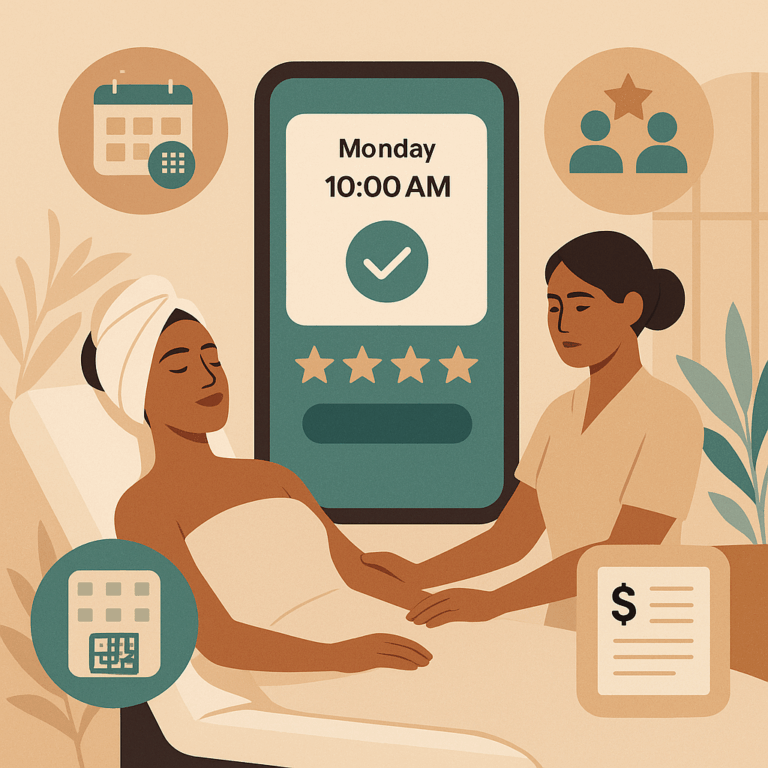Best Email Marketing Automation Tools for 2024: Features, Pricing, & ROI
Executive Summary:
Email marketing automation tools have evolved significantly, offering advanced personalization, integrations, and data-driven features that help businesses boost ROI. This comprehensive guide explores the leading platforms, their essential functions, and how to choose the right tool for your needs—ensuring you achieve measurable marketing results.
Think email is outdated? Think again. Modern email marketing automation platforms have become the backbone of digital business success—powering welcome sequences, abandoned cart nudges, B2B lead nurturing, and even advanced customer segmentation. In 2024, companies of all sizes are leveraging these tools to grow revenue, save hours each week, and deliver highly targeted, personalized messages that convert. But with dozens of options and shiny feature lists, choosing the right platform can be overwhelming. Let’s cut through the noise with a hands-on look at today’s best email marketing automation tools—focusing on what matters: efficiency, integration, and a measurable return on investment.
What is Email Marketing Automation, and Why Does It Matter?
Email marketing automation uses software to send targeted, timely emails to subscribers based on predefined triggers or schedules. Unlike bulk email blasts, automation tools personalize communication, nurture leads, and strengthen customer relationships while reducing manual workload.
- Efficiency: Automates repetitive tasks like welcoming new subscribers, drip campaigns, and re-engagement sequences.
- Personalization: Delivers content tailored to user behavior, preferences, or demographics, boosting engagement.
- Scalability: Manages large contact lists and complex segmentation, ensuring consistent messaging as you grow.
- Analytics: Tracks open rates, clicks, conversions, and other metrics to continuously improve campaigns.
Research from HubSpot shows marketers using segmented, targeted emails generate 58% of all revenue. With automation, you can scale those results—leaving more time for strategy and creative work.
Which Email Marketing Automation Tools Lead the Market in 2024?
The top email marketing automation tools balance ease of use with powerful functionality. Here’s a look at some of the most trusted platforms for businesses of all sizes:
| Tool | Best For | Starting Price (USD) | Key Features |
|---|---|---|---|
| Mailchimp | SMBs, creatives | $13/month | Automation templates, analytics, e-commerce integration |
| ActiveCampaign | B2B, advanced automation | $29/month | Sales CRM, deep automation, visual workflow builder |
| HubSpot | Scaling businesses | $45/month | All-in-one CRM, advanced marketing tools |
| Klaviyo | E-commerce | Free up to 250 contacts | Store integration, segmentation, SMS/email |
| ConvertKit | Content creators | $15/month | Simple automation, landing pages, tagging |
| Brevo (ex-Sendinblue) | Global reach | $25/month | SMS & Email, transactional emails, affordable plans |
Sources: G2 2024 Email Marketing Grid, HubSpot
How Do Email Marketing Automation Tools Work?
At its core, every tool connects your contact list to a set of triggers and actions—much like “if this, then that” statements. When a user subscribes, reaches a milestone, or abandons a cart, the software initiates pre-built workflows. Let’s break down the typical automation process:
- Capture: Forms, popups, or website integrations collect new subscribers.
- Segment: Subscribers are categorized by behavior or demographics.
- Trigger: Specific events (signup, purchase, link click) activate workflows.
- Send: Automated emails are sent, ranging from one-off messages to multi-step series.
- Measure: Analytics provide insights to optimize future campaigns.
This automation can dramatically increase efficiency and revenue. For example, abandoned cart emails have a 41% open rate and contribute up to 10% more recovered revenue for e-commerce brands (SaleCycle).
What Features Should You Prioritize When Choosing a Tool?
Not all automation platforms are built alike. Here’s what industry leaders and power users recommend considering:
- Ease of Use: An intuitive drag-and-drop workflow builder is essential for speed, especially for non-technical teams.
- Integration: Look for deep connections to your CRM, e-commerce store, or other marketing tools. HubSpot and Mailchimp excel here.
- Segmentation & Personalization: Ability to send hyper-targeted content based on rich customer data.
- Templates: Professionally designed, responsive email and automation templates accelerate campaign launches.
- Deliverability: Choose tools with strong infrastructure and anti-spam protocols to ensure your emails actually reach inboxes.
- Analytics: Granular reporting, A/B testing, and conversion tracking are critical for data-driven improvements.
- Pricing & Scalability: Transparent pricing that fits current needs—with room to grow as your list expands.
CTA: Ready to Optimize Campaign ROI?
Discover more technology trends and actionable guides on our Technology Insights portal, and start comparing the right automation tool for your business today.
How Do Top Email Marketing Platforms Compare?
Let’s stack up the leading contenders by their standout features, limitations, and best-fit scenarios:
| Platform | Strengths | Limitations | Great For |
|---|---|---|---|
| Mailchimp | User-friendly, huge integration library, solid analytics | Advanced automation can feel limiting as you scale | Small to midsize businesses, agencies |
| ActiveCampaign | Powerful workflow builder, advanced CRM features | Slightly steeper learning curve | B2B, sales-focused teams |
| Klaviyo | Best-in-class e-commerce integration, robust segmentation | Less suited for non-e-commerce use cases | Shopify/BigCommerce merchants |
| ConvertKit | Clean interface, creator-focused features | Basic compared to enterprise apps | Bloggers, YouTubers, course creators |
Which Automations Deliver the Highest ROI?
Some automated campaigns consistently outperform others. According to Litmus and industry surveys, the following drive major returns:
- Welcome Sequences: Set expectations, introduce your brand, and upsell early. Welcome emails average 86% higher open rates than regular newsletters.
- Abandoned Cart Series: Gentle reminders bring distracted shoppers back—recapturing sales that would otherwise be lost.
- Lead Nurturing Drips: Progressively educate, qualify, and move leads closer to sales—crucial for B2B or high-ticket purchases.
- Post-Purchase Follow-Ups: Encourage reviews, cross-sells, and repeat purchases while increasing customer loyalty.
- Win-Back Campaigns: Target subscribers about to churn with special offers or content to reignite engagement.
Pro Tip: Map each automation to a key customer journey stage. Start simple and refine based on data.
How Can You Maximize Deliverability and Compliance?
No tool is truly effective if your emails aren’t reaching the inbox. Deliverability depends on several factors:
- Sender Reputation: Use custom domains and avoid “no-reply” addresses.
- List Hygiene: Regularly clean your list to remove inactive subscribers, bounces, and spam traps.
- Content Quality: Avoid spammy language, use authentic branding, and always include an unsubscribe option.
- Compliance: Top platforms help you follow GDPR, CAN-SPAM, and other regulations.
Most enterprise-grade automation tools include built-in deliverability checks and compliance mechanisms. Regular use of A/B testing and deliverability monitoring is highly recommended for optimal performance (SendGrid).
How to Evaluate ROI for Email Marketing Automation?
ROI is more than just open and click rates—it’s about conversions, revenue per email, and long-term engagement. Here’s a quick framework:
- Calculate cost per subscriber against generated revenue (from direct sales, lead conversions, or upsells).
- Track metrics like Customer Lifetime Value (CLV) and churn reduction attributable to automation sequences.
- Use built-in analytics to experiment, optimize, and attribute conversions (most tools offer robust dashboards and integrations with Google Analytics).
Clever use of automation can deliver 36x returns on investment, according to the Data & Marketing Association.
FAQs
- How do I choose the best email marketing automation tool?
- Prioritize ease of use, integrations, deliverability, advanced segmentation, and pricing that fits your growth plans.
- Can automation tools integrate with e-commerce platforms?
- Yes, leading tools like Klaviyo and Mailchimp offer deep integrations with Shopify, WooCommerce, and more.
- Are these platforms suitable for small businesses?
- Absolutely—platforms like Mailchimp and ConvertKit cater specifically to small business and creators with affordable plans.
- What is the typical ROI on email marketing automation?
- Industry reports indicate average returns of $36 for every $1 spent, though your mileage may vary based on execution.
- How often should I update my automation workflows?
- Audit and update campaigns at least quarterly to optimize performance, maintain deliverability, and adapt to changes in customer needs.
- Do I need technical skills to use these tools?
- No—most feature intuitive builders. However, advanced automations and integrations may require light technical know-how.
- What’s the biggest mistake to avoid with email automation?
- Avoid generic messaging; maximize results by segmenting your audience and constantly refining your workflows.
Choosing the right email marketing automation tool isn’t about chasing the longest feature list—it’s about aligning with your business needs and delivering value. Start by identifying your primary use case: Are you nurturing leads, converting online shoppers, or scaling a content brand? Test one or two top-rated tools on a trial basis. Watch your metrics, iterate your workflows, and use segmentation and testing to unlock maximum engagement.
For deeper insight into SaaS, automation, and digital marketing strategy, explore our advice on the Digital Business Association SaaS resource center. Ready to grow? Invest in an email automation tool that matches your ambitions, and make 2024 the year you turn email into your highest-performing digital asset.
Author: Dr. Casey Moran is a digital marketing strategist and SaaS researcher. Connect for more automation insights or visit trusted sources like Campaign Monitor for deeper dives.







